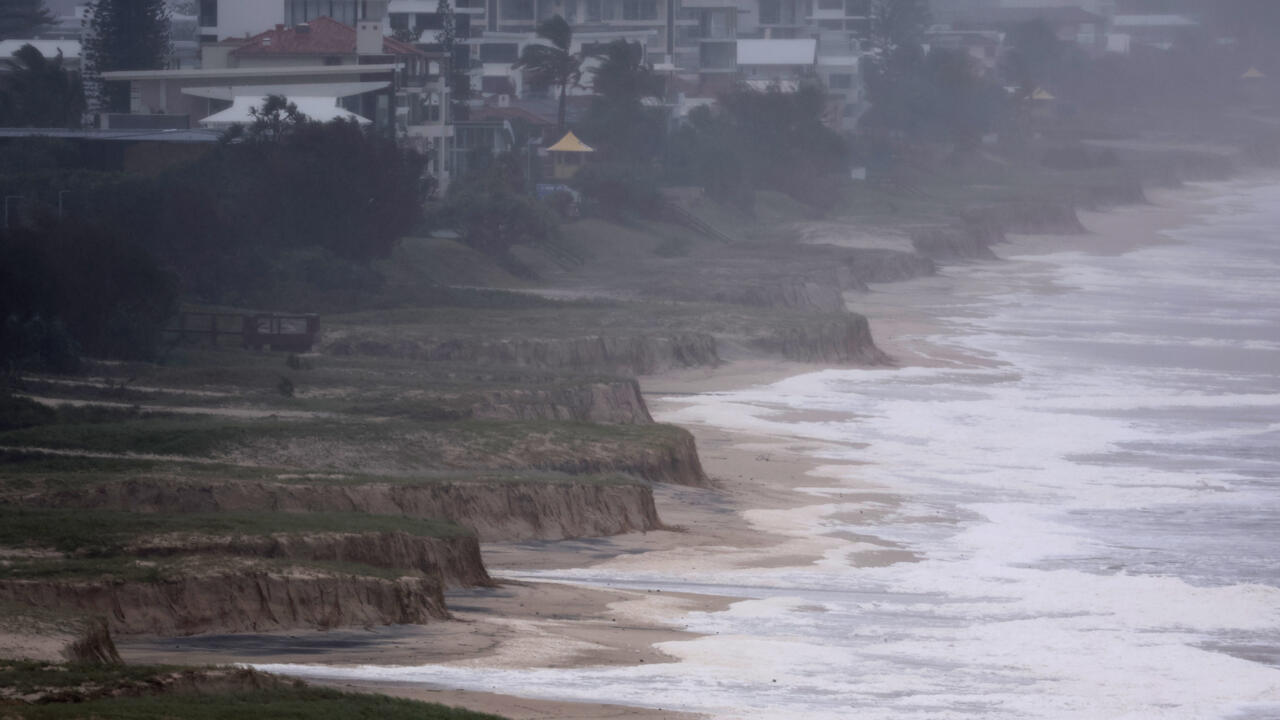Climate change is no longer a distant concern for the future—it is an unfolding crisis that is reshaping lives, economies, and landscapes across the globe. A new report has sounded the alarm for Australia, warning that rising seas could displace as many as 1.5 million Australians by 2050. This revelation is not just a projection of environmental risk but a human story of potential displacement, lost livelihoods, and communities facing upheaval. From coastal cities to remote island communities, the rising tide threatens to redraw maps and redefine what home means for countless Australians.
- Understanding the Report and Its Projections
- Why Rising Seas Are Accelerating
- The Human Face of Displacement
- Economic Implications of Rising Seas
- Government Response and Policy Debates
- Indigenous Perspectives on Rising Seas
- Global Context and Comparisons
- What Can Be Done to Mitigate the Threat
- Expert Opinions and Warnings
- FAQs
- What does the report say about Australians being displaced by rising seas?
- Which areas of Australia are most at risk from rising seas?
- How will rising seas affect the Australian economy?
- What role do Indigenous communities play in this issue?
- Can rising seas be stopped?
- Conclusion
The report underscores the urgency of taking decisive action to combat climate change, while highlighting the severe social and economic consequences of inaction. For Australia, a nation with vast coastlines and major population centers hugging the sea, the stakes could not be higher. To understand the gravity of the situation, it is crucial to look beyond the numbers and statistics and explore how this phenomenon could ripple through everyday lives.
Understanding the Report and Its Projections
The central finding of the report is stark: 1.5 million Australians could be displaced by 2050 due to rising sea levels. This figure comes from a comprehensive analysis conducted by climate scientists and researchers, who used satellite data, climate models, and population density projections to assess the risks. The report stresses that these projections are not exaggerated doomsday scenarios—they are based on conservative estimates of global temperature increases and ice sheet melt.
According to the Intergovernmental Panel on Climate Change (IPCC), sea levels worldwide have risen by about 20 centimeters since 1900, and the rate of increase has accelerated in recent decades. Australia, with its sprawling coastline stretching over 34,000 kilometers, is particularly vulnerable. Major cities such as Sydney, Melbourne, Brisbane, and Perth could see significant parts of their coastal suburbs submerged, while smaller towns and Indigenous communities in the Torres Strait Islands face an existential threat.
Why Rising Seas Are Accelerating
One of the most pressing questions is why seas are rising faster now than in the past. The answer lies in a combination of global warming, melting ice sheets, and thermal expansion of seawater. As the planet warms due to greenhouse gas emissions, polar ice in Antarctica and Greenland melts at an accelerated pace, contributing to higher sea levels. Additionally, warmer water expands, further compounding the problem.
Scientists note that the melting of Antarctic ice could have a disproportionately large impact on Australia because of the continent’s geographical proximity. A destabilization of the West Antarctic Ice Sheet, for instance, could lead to a rapid surge in sea levels that devastates coastal infrastructure and displaces communities across the nation.
The Human Face of Displacement
Numbers can feel abstract, but behind every statistic is a human story. For many Australians, rising seas mean not just water encroaching on land but homes, memories, and livelihoods being swept away.
Take the Torres Strait Islands, for example. Residents there are already seeing the impacts firsthand. Homes are flooded during king tides, ancestral burial grounds are being eroded, and food security is under threat as saltwater intrudes into freshwater sources. For these communities, the loss is not only physical but cultural, as land holds deep spiritual and historical significance.
In larger cities, middle-class families may face the harsh reality of losing their coastal homes, with property values plummeting and insurance becoming unaffordable. A study by Climate Council Australia has already shown that billions of dollars in coastal property value could be wiped out by 2030. Imagine families who invested their life savings into beachfront homes suddenly finding themselves without a secure future.
Economic Implications of Rising Seas
The economic consequences of rising seas could ripple through nearly every sector of Australian life. Coastal infrastructure—including roads, ports, airports, and rail lines—faces billions of dollars in potential damage. Tourism, one of Australia’s largest industries, is also at risk. Iconic attractions such as the Great Barrier Reef are already suffering from coral bleaching events, and rising seas could make once-pristine beaches vanish.
Insurance is another key issue. As risks mount, insurance companies are either raising premiums or withdrawing coverage altogether from high-risk areas. This leaves homeowners and businesses financially vulnerable, creating a knock-on effect that destabilizes local economies. A recent report suggested that some 700,000 homes could become uninsurable by mid-century, exacerbating social inequality as wealthier Australians relocate while vulnerable populations are left behind.
Government Response and Policy Debates
Australia’s political response to climate change has long been marked by division. Successive governments have struggled to balance economic reliance on fossil fuels, particularly coal exports, with the urgent need to reduce emissions. The new report adds to the mounting pressure on policymakers to adopt stronger climate action.
Several proposals are on the table, including investments in renewable energy, stricter emissions targets, and large-scale coastal defense projects. Some advocates argue for a managed retreat from vulnerable coastal areas, where communities are gradually relocated inland in a controlled and supported manner. However, this strategy raises complex ethical and logistical questions, including compensation, land rights, and social cohesion.
Indigenous Perspectives on Rising Seas
Indigenous communities have been at the forefront of environmental stewardship for millennia, and their voices are critical in shaping the response to rising seas. In the Torres Strait, Indigenous leaders have already taken legal action against the Australian government, arguing that failure to act on climate change violates their human rights. Their stories highlight the intersection of environmental justice, cultural heritage, and global responsibility.
Elder Aunty Mabel, for instance, describes how rising waters have disrupted traditional fishing practices and sacred sites: “Our ancestors are buried on these lands, and the seas are washing them away. How can we pass down our stories and traditions if our land disappears?” This human perspective makes clear that climate change is not just an environmental issue but also a moral one.
Global Context and Comparisons
Australia is not alone in facing the threat of rising seas. Around the world, nations from Bangladesh to the United States are grappling with similar challenges. The World Bank estimates that globally, more than 140 million people could be displaced by climate change by 2050, with rising seas being a major driver. For low-lying island nations such as Tuvalu and the Maldives, the crisis is existential—entire countries may become uninhabitable.
By placing Australia’s predicament in this global context, the report underscores the interconnected nature of the crisis. What happens in the Arctic or Antarctica reverberates across continents, reminding Australians that this is not a localized issue but a global emergency requiring collective action.
What Can Be Done to Mitigate the Threat
While the situation is dire, there are pathways forward. Experts highlight several key strategies:
- Reducing Emissions: The most critical step is to curb greenhouse gas emissions. Transitioning away from fossil fuels toward renewable energy sources such as wind, solar, and hydroelectric power is essential.
- Strengthening Infrastructure: Building seawalls, restoring mangroves, and improving drainage systems can provide temporary relief for vulnerable areas.
- Managed Retreat: Planning for the gradual relocation of at-risk communities is a difficult but necessary conversation.
- International Cooperation: As a global issue, rising seas require collaboration across borders, from sharing technology to providing financial support for vulnerable nations.
Expert Opinions and Warnings
Leading scientists have been unambiguous about the urgency of action. Dr. Nerilie Abram, a climate scientist at Australian National University, states: “We are running out of time. Every fraction of a degree in warming makes a difference. If we don’t act now, the displacement of millions is not just possible—it is inevitable.”
The Climate Council echoes this sentiment, warning that without urgent measures, the human and economic toll of rising seas could far exceed current projections. Policymakers are urged to treat the issue not as a future possibility but as an immediate crisis that requires bold leadership.
FAQs
What does the report say about Australians being displaced by rising seas?
The report warns that as many as 1.5 million Australians could be forced from their homes by 2050 due to rising sea levels. These projections are based on scientific models that account for melting ice sheets, global warming, and population density along coastlines.
Which areas of Australia are most at risk from rising seas?
Coastal cities such as Sydney, Melbourne, Brisbane, and Perth are particularly vulnerable, as are smaller communities in the Torres Strait Islands and along the eastern seaboard. Low-lying coastal towns face the highest risk of flooding and displacement.
How will rising seas affect the Australian economy?
Rising seas could cause billions in damages to coastal infrastructure, reduce property values, and make insurance unaffordable for hundreds of thousands of homes. Industries like tourism and agriculture will also face major disruptions.
What role do Indigenous communities play in this issue?
Indigenous communities, particularly in the Torres Strait Islands, are among the first to experience the impacts of rising seas. They are advocating for stronger climate action and highlighting how rising waters threaten their cultural heritage and human rights.
Can rising seas be stopped?
While it is impossible to reverse the rise that has already occurred, the speed and extent of future sea-level rise can be mitigated by reducing global greenhouse gas emissions, investing in adaptive infrastructure, and planning for community resilience.
Conclusion
The warning that 1.5 million Australians could be displaced by 2050 is not just a scientific forecast—it is a wake-up call for urgent action. Rising seas threaten homes, livelihoods, cultural heritage, and economic stability. This is not a challenge that can be postponed; it demands immediate and coordinated responses from governments, businesses, and individuals alike. Australia’s vast coastline has always been a symbol of beauty and prosperity, but without decisive measures, it may become the front line of a national crisis. The future is not predetermined, and the choices made today will decide whether Australia confronts this challenge with resilience or succumbs to the rising tide.







